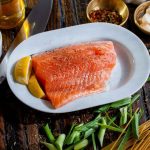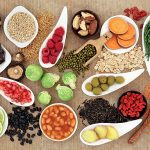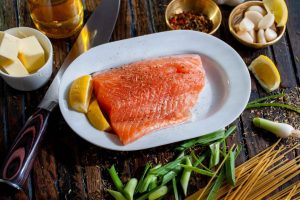In our quest for optimal health, understanding the secrets and wisdom of the food guide can be a transformative journey. The food guide offers a comprehensive framework for balanced eating, providing guidance on which foods to prioritize and how to portion them. In this article, we embark on the exploration of these secrets, unveiling the power they hold in helping us achieve a nourished and well-balanced lifestyle.
Cracking the Code of a Balanced Diet: The key to unlocking the secrets of the food guide lies in its fundamental principles of ensuring a balanced diet. It encourages us to incorporate a variety of nutrient-rich foods from different food groups to obtain all essential nutrients and maintain overall health. Understanding and implementing these principles form the foundation of a holistic approach to eating.
Embracing the Essential Components: The food guide introduces vital components crucial for achieving a balanced diet:
- Vibrant fruits and vegetables: These natural wonders are packed with vitamins, minerals, antioxidants, and dietary fiber. By including a colorful mix of fruits and vegetables in our daily meals, we enhance our immune system, support digestion, and reduce the risk of chronic diseases.
- Wholesome grains: Whole grains provide complex carbohydrates, fiber, and key nutrients. Choosing options like quinoa, whole wheat bread, and brown rice over refined grains contributes to sustained energy levels, supports optimal gut function, and promotes heart health.
- Lean proteins: Incorporating lean protein sources such as poultry, fish, legumes, tofu, and dairy products helps build and repair body tissues. Proteins are the building blocks of cells, enzymes, and hormones, playing a critical role in various bodily functions.
- Healthy fats: Essential fatty acids found in healthy fats like avocados, nuts, seeds, and olive oil support brain health, hormonal balance, and proper absorption of fat-soluble vitamins. Incorporating these healthy fats in moderation adds flavor, satiety, and crucial nutrients to our diet.
Understanding Portion Sizes: Decoding the secrets of the food guide also involves understanding portion sizes for different food groups. While individual requirements may vary, following the recommended serving sizes helps ensure a balanced intake. Being mindful of portion control enhances nutritional balance, prevents overeating, and supports weight management goals.
Cultivating Mindful Eating Habits: Beyond the prescriptive nature of serving sizes, the food guide encourages us to cultivate mindful eating habits. This means savoring each bite, paying attention to body cues of hunger and satiety, and being present during mealtime. By practicing mindful eating, we foster a deeper connection with our bodies, build a healthier relationship with food, and gain a better understanding of our nutritional needs.
Personalization and Continual Learning: While the food guide provides invaluable guidance, it is essential to personalize our dietary choices based on individual preferences, cultural backgrounds, and specific health requirements. Seeking advice from qualified professionals, such as registered dietitians or nutritionists, helps tailor recommendations to individual needs and ensures a sustainable approach to balanced eating.
Unlocking the secrets of the food guide leads us on a transformative journey towards balanced eating and optimal health. By embracing its principles, incorporating essential components, understanding portion sizes, and cultivating mindful eating habits, we can nourish our bodies, fuel our minds, and thrive in every aspect of life. This comprehensive approach to balanced eating serves as a lifelong tool for continued growth, learning, and seeking a harmonious relationship with food. Let’s unlock the secrets of the food guide and embark on a well-nourished and fulfilling lifestyle.















Add Comment